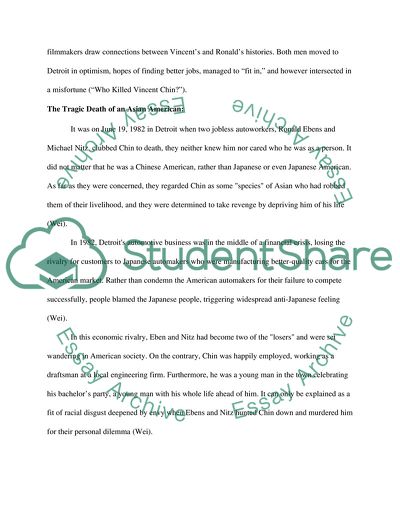Cite this document
(Hate Crime against Asian American Movie Review Example | Topics and Well Written Essays - 2000 words, n.d.)
Hate Crime against Asian American Movie Review Example | Topics and Well Written Essays - 2000 words. https://studentshare.org/culture/1723708-film-research-paper-hate-crime-against-asian-american-who-killed-vincent-chin
Hate Crime against Asian American Movie Review Example | Topics and Well Written Essays - 2000 words. https://studentshare.org/culture/1723708-film-research-paper-hate-crime-against-asian-american-who-killed-vincent-chin
(Hate Crime Against Asian American Movie Review Example | Topics and Well Written Essays - 2000 Words)
Hate Crime Against Asian American Movie Review Example | Topics and Well Written Essays - 2000 Words. https://studentshare.org/culture/1723708-film-research-paper-hate-crime-against-asian-american-who-killed-vincent-chin.
Hate Crime Against Asian American Movie Review Example | Topics and Well Written Essays - 2000 Words. https://studentshare.org/culture/1723708-film-research-paper-hate-crime-against-asian-american-who-killed-vincent-chin.
“Hate Crime Against Asian American Movie Review Example | Topics and Well Written Essays - 2000 Words”. https://studentshare.org/culture/1723708-film-research-paper-hate-crime-against-asian-american-who-killed-vincent-chin.


